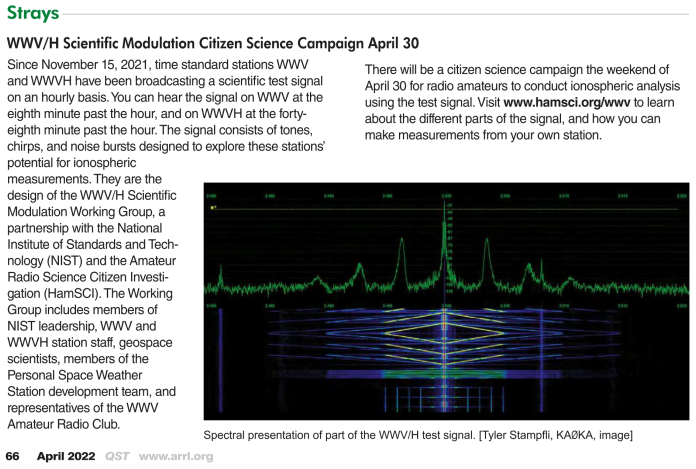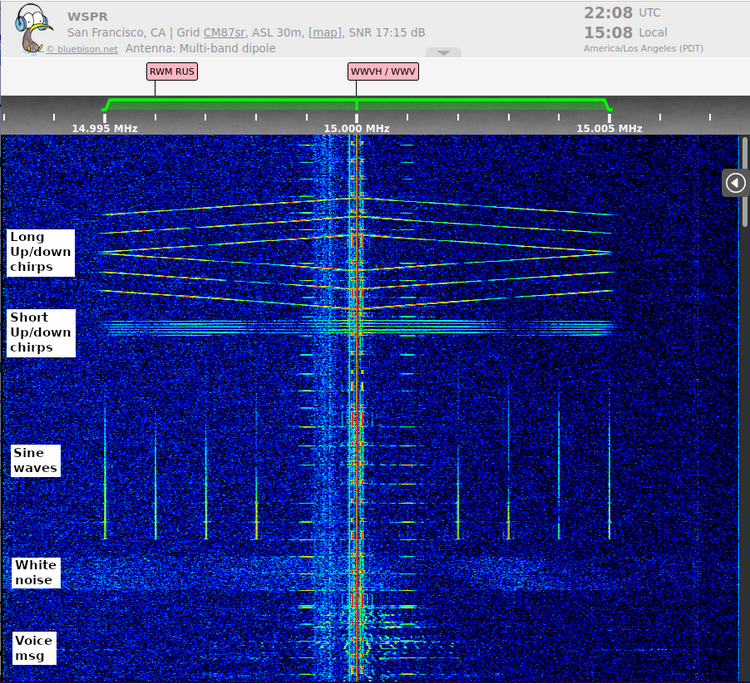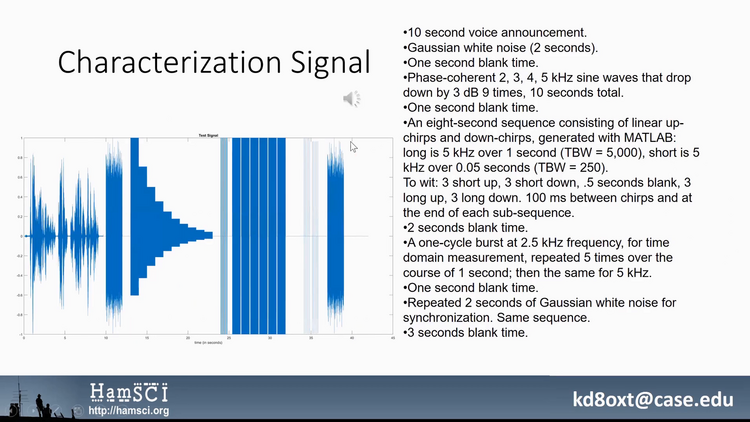I was perusing the latest edition of QST and noticed a short article on some scientific experiments that hams were doing with WWV and WWVH. I tune in to WWV occasionally to check propogation, and also for frequency calibration of my Kenwood TS-2000.

Wow, this seems cool! The HamSCI WWV webpage has a bunch of information, including a great presentation by Kristina Collins KD8OXT.
Receiving the Signal
I recently added a KiwiSDR at my home station, so I twisted the dial over to WWV (in software, pretty anticlimactic), and started listening. I barely heard the test signal from Hawaii because propagation that evening was very poor. There was several solar flares over the next few days, causing lots of interference on HF.
Eventually, on 10 April 2022 at 2208 UTC, propagation was good enough to grab a clean screenshot of the test signal. This was transmitted from WWV on 15 MHz.
Comparing my received signal to the what was actually transmitted shows the voice, tones, and chirps are very easy to hear when propagation is good. But interestingly enough, I never heard anything after the long chirps. A repeated one-cycle burst at 2.5 kHz and 5 kHz is very short, but I should at least hear the two seconds of white noise at the end, as I hear the white noise just after the voice announcement.
Sunrise Festival
The HamSCI group is organizing the Sunrise Festival, where people from around the world will record WWV and WWVH during the weekend of 30 April 2022. Based on my peeking under the hood of the wsprdaemon bash script, I think it will be pretty easy to write a small bash script to automate recordings using kiwirecorder.py. Stay tuned!

